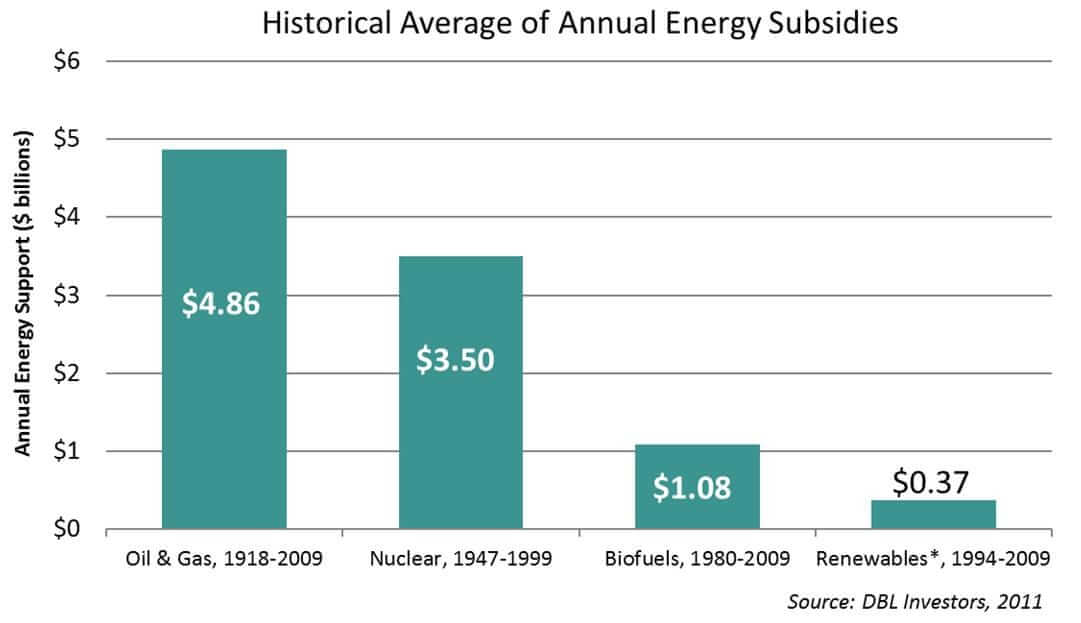Koch-funded study on cost of wind flawed throughout
A new report claiming to assess the true cost of wind energy builds on the mistakes of a Newsweek article that resulted in several corrections and disclosures to be appended to it.
The study was published by the Institute of Political Economy at Utah State University, which is funded by the Koch brothers, along with Strata Policy, an organization founded by Randy Simmons who is a professor at the Koch-funded institute. Simmons previously published a piece at Newsweek also claiming to assess the true cost of wind energy, but the errors and blatant attempt at hiding his Koch funding led to an uproar that led Newsweek to make several corrections, add disclosure of his funding, and publish a rebuttal piece on The True Benefits of Wind Power. This time around co-author Ryan Yonk, also a part of the Koch-funded institute at Utah State, is serving as the public face of the study, but is promoting the same misleading claims about wind power.
Here’s what you should know:
Wind energy’s incentives should be put in perspective. The Koch-funded study says that the cost of federal and state incentives for wind should be considered when looking at the cost of wind, but does not note that other sources of energy receive similar incentives. For instance, it states that “State and local policies alike have brought in lavish subsidies for wind power developers in Texas,” but does not note that Texas has also provided tax incentives for many energy sources, such as drilling for natural gas.
As the nonpartisan Congressional Research Service has explained “For more than half a century, federal energy tax policy focused almost exclusively on increasing domestic oil and gas reserves and production. There were no major tax incentives promoting renewable energy or energy efficiency.” The venture capital firm DBL Investors has found that renewables account for less than 1 percent of the total amount of incentives given to fossil fuels and nuclear energy.
The Nuclear Energy Institute’s own tally actually finds that all renewables accounted for less than 10 percent of federal energy incentives over the period 1950-2010, versus 70 percent for fossil fuels.
The Koch-funded study also greatly exaggerates the number of programs that support renewable energy, as most of the programs listed actually supported renewable energy writ large or “other activities.”
Renewable Portfolio Standards bring significant benefits at little cost. The study also cites a similarly Koch-linked group, the Institute for Energy Research, to claim that states with Renewable Portfolio Standards (RPS) have significantly higher electric rates. However, this claim has also been debunked by DBL Investors, which found that the states with the most renewable energy actually had lower electric rates than the national average.
The National Renewable Energy Laboratory (NREL) estimated that the incremental cost of RPS laws is less than 4 percent of electricity rates in every state studied, and that the RPS had almost no impact on Texas’ electric rates in part due to its low-cost wind power:
NREL noted that “Potential benefits of RPS policies include reduced emissions, water savings, fuel diversity, electricity price stability, and economic development.”
Study contradicts itself by saying wind energy is too cheap. Before claiming that wind energy is raising electric prices though, Simmons claims that wind energy is reducing electricity prices so much that it is making it harder for other energy sources to compete. The claim that wind energy is having an undue impact on other energy sources has been rejected by a number of experts, who note that such “negative pricing” is extremely rare and almost always caused by factors unrelated to wind energy.
Transmission lines benefit consumers. As we noted previously, since transmission lines more than pay for themselves they should be viewed as a benefit, not a cost. Transmission lines save consumers money, improve electric reliability, make electricity markets more competitive, and protect consumers against spikes in fuel prices. For example, transmission lines primarily added to help integrate wind in Texas have improved electric reliability around Dallas and San Antonio, while also facilitating the development of oil and gas production in West Texas. Even if transmission were viewed as a cost that should be attributed to wind, the Department of Energy has calculated it to be a cost of $3.2 per megawatt-hour, which is not drastically higher than transmission costs for other energy sources.
Environmental benefits of wind not calculated. The Koch-funded study briefly mentions that wind energy has environmental benefits, but dismisses incorporating them into the cost because of the “incredible difficulty of quantifying it” – pointing primarily to carbon emissions rather than other pollution that wind energy also avoids. Nevermind that this did not stop them from adding in other supposed costs that they acknowledge are “difficult to quantify.”
Simmons and his co-authors claim that even the benefits of avoiding pollution could be calculated, that wind energy would not have as significant of a reduction on pollution as estimated. However, studies conducted by NREL, independent grid operators, the Intergovernmental Panel on Climate Change, and others have found that wind energy reduces pollution as much as expected or even more than the amount expected.
In the end, purporting to calculate the “True Cost of Wind Energy,” while ignoring the significant pollution it avoids is ignoring the elephant in the room.








